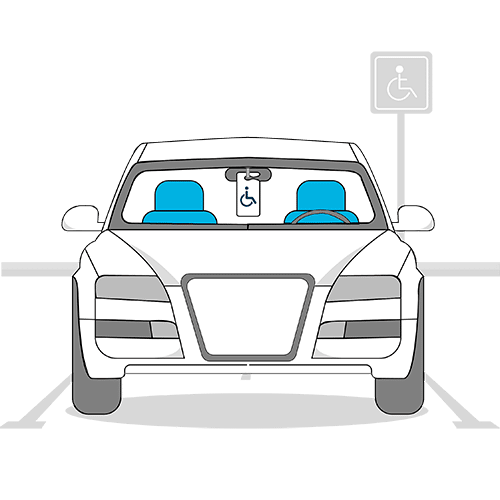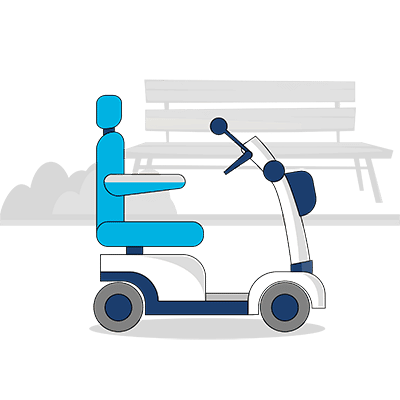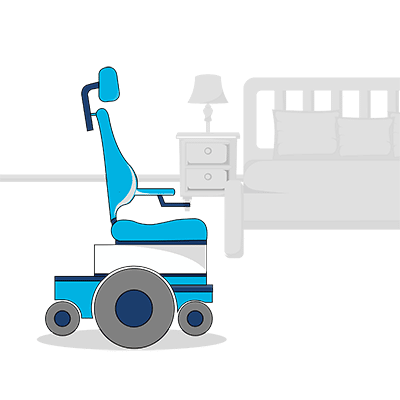If you’re an Australian who cares for someone who can’t manage on their own, you may be eligible for financial support. This could be carer’s payment or allowance, or both. It may also include other payments, like age pension or carer supplement depending on your age, and the age and needs of the person you care for.
Caring for someone can be costly and time consuming. These payments are meant to prevent you from struggling while you undertake this crucial work.
In this article we answer some common questions about carer’s payment and allowance. These include questions like eligibility, how much support a carer gets and who can get both carer’s payment and allowance.
In this article
- Carer’s payment vs allowance
- Who is eligible for carer’s payment in Australia?
- How to apply for carer’s allowance
- How much is carer’s payment and allowance
- Can you get both carer’s payment and carer’s allowance?
- Other disability payments and discounts
- Disability car insurance for drivers and passengers with limited mobility
Carer’s payment vs allowance
Carer’s payment and allowance have some similarities and differences. For example, both payments are for people who care for someone with a disability, medical condition or frailty needs.
Here are some basic similarities and differences between these two types of payments.
| Carer’s payment | Carer’s allowance |
| Fulltime care | Extensive care |
| Fortnightly payment | Fortnightly payment |
| Carer and the person being care for must be eligible | Carer and the person being care for must be eligible |
| Carer completes an income and assets test | Carer completes an income test |
| Can only get carer’s payment and allowance | Can only get carer’s allowance |

Who is eligible for carer’s payment in Australia?
Carer’s payment is for someone who takes care of a person with disability, frailty or a medical condition, fulltime. This means that you care for a person to the extent that you can’t also work or study because of how much care you provide. In other words, the amount of time you dedicate to caring is similar to or like a working day.
Caring vs working or studying fulltime
Whether you care for the person at your home, their home or in a hospital setting doesn’t matter. The main requirement is that you take care of them so much that you can’t work or study. This means you’re eligible for the carer’s payment which replaces the income you’d otherwise be able to earn.
Intensive daily care
You may be eligible for the carer’s payment even if the care is short term, but intensive. This includes care for children with a short term condition or who have a condition that may recur from time to time (episodic).
It also includes caring for multiple people with less intensive needs but their combined needs add up to the same level of intensity as one person with fulltime needs. You may even be one of two carers looking after the same person and if that person’s needs are intensive enough then you’ll still be eligible. Even though you’re sharing the workload.
The emphasis is less on how long the person will need care for and more on how intensive the care they need is. For example, you must help them to do things like getting dressed, taking medicine and provide physical support and supervision.

Income and assets limits
To be eligible for the carer’s payment, you and the person you care for both need to meet the income and assets limits (which change every year).
- The person providing care
The income and assets test for the carer is based on how much you and your partner earn and the value of your combined assets. For example, whether you’re a pensioner, homeowner, single or not each affects how much you’re paid.
The amount you receive will be worked out on the value of your and your partner’s assets and income.
- The person receiving the care
At the time of writing, this means the person you care for must earn less than $135,640 before tax each year and their assets must be valued below $836,750. The test also includes some limits on the income and value of assets of their family members.
These limits may be different when the person you care for gets income support payment.

How to apply for carer’s allowance
Carer’s allowance is a payment for people who work or study fulltime while also taking care of someone with a medical condition or disability. This means taking care of them extensively on a daily basis but not to the extent that you can’t still work or study fulltime.
If you care for more than one person you can get carer’s allowance for each person. If you care for multiple people whose needs add up to one eligible person, then you could still get carer’s allowance.
Eligibility for carer’s allowance
To apply for carer’s allowance, you must care for someone who needs ongoing daily care for at least 12 months or more. This could be because they are old and frail, have a terminal medical condition or live with disability. A doctor or other medical professional will need to confirm this.
It doesn’t matter whether you care for the person in your own home or at their home, as long as you care for them daily. You are only eligible for carer’s allowance if your and your partner’s yearly combined income is under $250,000 before tax.
You and the person you care for must be Australian and be based in Australia.
Claiming carer’s allowance
You can apply for carer’s allowance through Centrelink. The process is fairly straightforward and you need to click through the step by step instructions. You’ll be asked for some supporting documents and if you don’t already have an online profile, you’ll need to set one up.
When you apply for carer’s allowance you’ll need to give supporting evidence. This includes your tax file number, financial assets (bank account details, income, assets, superannuation statement etc.), relationship and work status.
Find out more about claiming carer’s allowance here.

How much is carer’s payment and allowance
As you can see from the detailed descriptions above, there are some similarities between the carer’s payment and allowance. Both are for extensive care for a person with disability, frail care needs or a serious medical condition.
However, the carer’s payment is for a person giving more intensive care, that takes up more of their time. Although the carer’s allowance is for someone giving extensive care, its less time consuming.
- Carer’s allowance. Carer’s allowance for a person who works or studies fulltime and takes care of someone is $153.50 fortnightly. You might also be able to claim other types of payments at the same time, including disability support pension.
- Carer’s payment. The amount you get for carer’s payment will be based on your income and assets. It can also change depending on whether you’re in a couple, single, separated because of ill health and a few other things. The basic amount you for carer’s payment is $1,002.50 fortnightly or $1,511.40 for a couple combined.
As you can see from the different amounts, the carer’s payment is a substitute for loss of income while the carer’s allowance is to supplement income.

Can you get both carer’s payment and carer’s allowance?
If you qualify for the carer’s allowance then no. You can’t also get the carer’s payment as it’s a different level of payment. However, if you get the carer’s payment, you can get the allowance as part of that to help cover your costs.
Other related funding
Besides carer’s payment and allowance, there are some other payments that anyone who gets either of these may be eligible for. These include the Child Disability Assistance Payment, Carer Adjustment Payment and Health Care Card for those caring for children.
There is also the Age Pension (eligible people can choose between this or carer’s payment), the Youth Allowance for students and Australian Apprentices and the Parenting Payment.
Other disability payments and discounts
If you live with disability or care for someone who does, then you might be interested in other disability grants and discounts. We’ve rounded up several that might be useful here:
- Disability car insurance discounts
- Mobility allowance in Australia
- Disability discounts worth knowing
- Disability support pension
Now onto another benefit – car insurance for people with disability and carers, friends or family who drive their car.
Disability car insurance for drivers and passengers with limited mobility
If you live with limited mobility or you care for someone who does, you might be interested to find out more about Blue Badge Insurance disability car insurance. Our car insurance for drivers and/or passengers with limited mobility helps pay for the cost of repair or replacement. This includes cover for accidents, theft, vandalism, fire, hail, storm, or flood and more.
- Car insurance for carers and people with limited mobility
We also provide car insurance for wheelchair accessible vehicles and disability converted cars. Besides the many benefits of having our disability car insurance (like rental car benefit if your car is damaged or stolen, legal liability up to $20 million and more) there’s another… If you (or your passenger) have a disability parking permit you can get up to 25% discounted car insurance.
- Mobility equipment insurance for wheelchairs and mobility scooters
Many who live with a disability, serious medical condition or are elderly use mobility equipment to move around more easily. Wheelchairs and mobility scooters can make a world of difference to moving around the house and getting out and about.
These cost a lot, so when they get broken in an accident or stolen, it can be expensive to repair or replace them.
Blue Badge Insurance offers wheelchair insurance and mobility scooter insurance to help pay these costs. We know many people with limited mobility use a disability parking permit and some drive modified cars.
Click below to get a quote.








